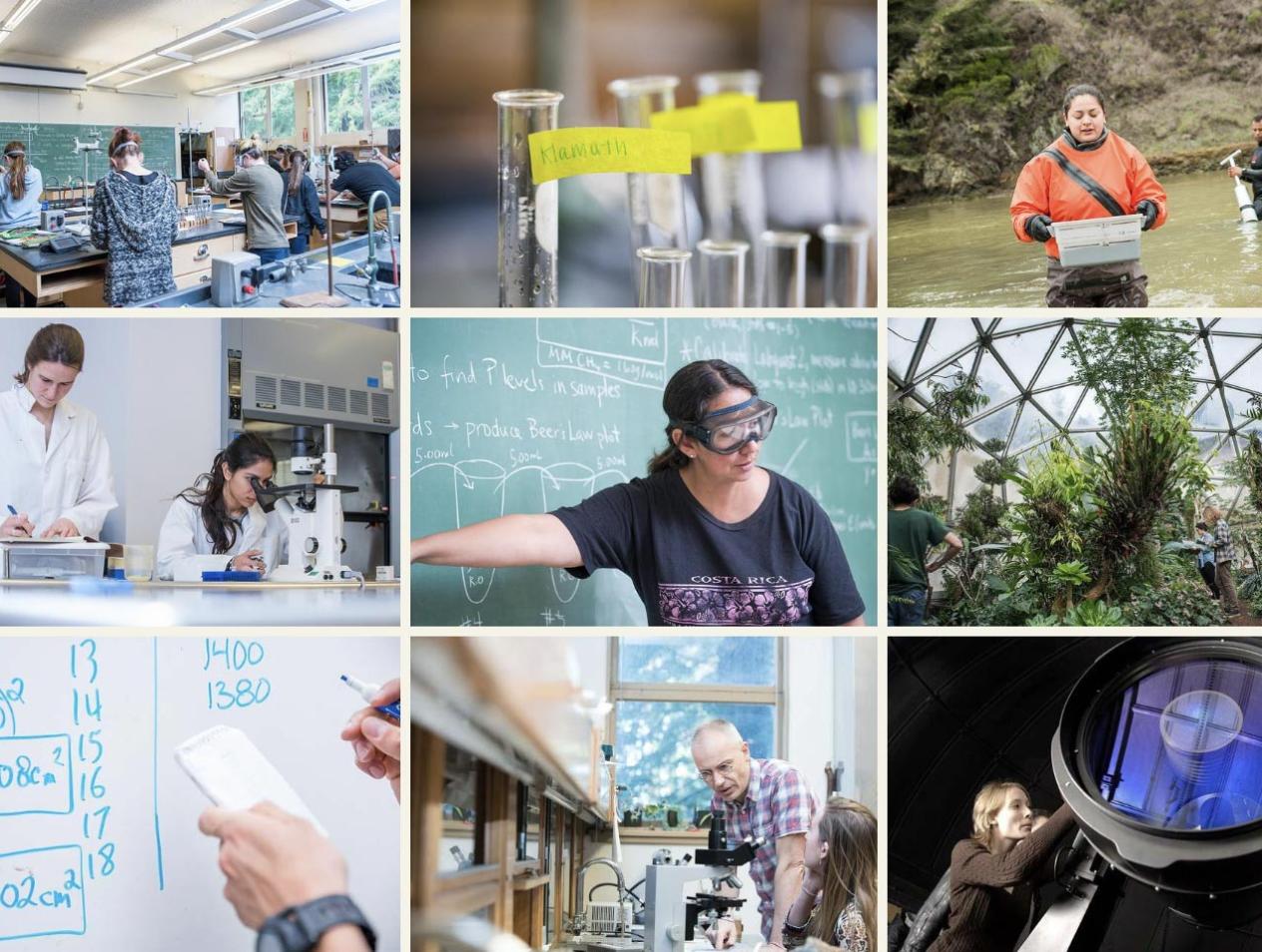Breadcrumb
Achievements
Find out what our students, faculty, and staff are being recognized for.
Michelle Robinson
Geology
Geology student Michelle Robinson was recently accepted into the U.S. Geological Survey/National Association of Geoscience Teachers Cooperative Field Training Program. The USGS/NAGT program is the longest continuously running internship program in the earth sciences. Michelle will be based in Portland, OR working with USGS scientists on water-quality conditions in the Columbia River Basin. He work will focus on "toxics," including anthropogenic-indicator compounds, pharmaceuticals, PBDEs, pesticides and legacy compounds.
Erin Quinn
Geology
Erin Quinn recently accepted a Smithsonian Graduate Student Fellowship at the National Museum of Natural History. Erin will conduct high-temperature, high-pressure experiments on rocks from Chaos Crags, Lassen Volcanic National Park. Erin’s work will be the first experimental phase equilibrium study on Chaos Crags and will provide important constraints on magma storage conditions at Chaos Crags. This is important for better understanding the volcanic hazards within Lassen Park.
Kelly Morgan
Geology
Geology student Kelly Morgan will serve as seasonal hydrologic technician with the Rocky Mountain Research Station for summer 2013. Kelly will conduct surveys of geomorphic features in the Upper East Fork Weiser River in central Idaho using GPS and other methods. She will use the Geomorphic Road Assessment and Inventory Package (GRAIP), a process and set of tools for analyzing the impacts of roads on forested watersheds. GRAIP combines a detailed road inventory with a powerful GIS analysis tool set to predict road sediment production and delivery, mass wasting risk from gullies and landslides, and road hydrologic connectivity.
Joe Camacho Jr.
Geology
Geology student Joe Camacho Jr. received the National Science Foundation's Research Experience for Undergraduates (NSF-REU) Summer Internship. Joe will use surface observations to search for blind (subsurface) faults in the North American platform in central Tennessee. He will present his summer research at the fall meeting of the Geological Society of America in Vancouver, BC.
Leslie Scopes Anderson
Biological Sciences
HSU graduate student Leslie Scopes Anderson and Ken Burton have just completed a bird guide entitled "Common Birds of Northwest California – Humboldt, Del Notre & Trinity Counties." Over a year in production, the book is 176 pages and contains over 500 photos, (most by Leslie) as well as habitat charts and informative text about the birds. The guide is published by Redwood Region Audubon Society and will soon be available in local book stores.
Leslie Scopes Anderson
Biological Sciences
Graduate student Leslie Anderson recorded a first-ever sighting of a rare Red-bellied Woodpecker in the state of Nevada. It is also the second western-most sighting in the US of the bird, bested only by one in Idaho in 2003. Leslie noticed the woodpecker in June near the historic Bressman cabin at Ruby Lake National Wildlife Refuge and documented it with high-quality photographs. The first-sighting was later confirmed by local bird expert Ken Burton and the Nevada Bird Records Committee. An article about the find will appear in the April-May issue of Western Birds.
Environmental Resources Engineering Students
Environmental Resources Engineering
Two teams of Environmental Resources Engineering students recently took high honors in the Consortium for Mathematics and its Applications Mathematical Modeling Contest Jan. 31 to Feb. 4. Both teams worked on the same problem, which required building a mathematical model for an effective, cost-efficient water strategy to meet the United States' projected water needs in 2025. In particular, the model was required to address water storage and movement, desalinization and conservation.
The first team--consisting of Lianna Winkler-Prins, James Courtney and Ryan P. Dunne--earned an honorable mention ranking. The second team--consisting of Kevin Kipp, Britlandt Abney and Andrew Preiksa--was awarded a meritorious ranking. Each team prepared a detailed report that included one of three possible modeling problems.
Lonny Grafman
Environmental Resources Engineering
The manuscript "Medical device compendium for the developing world: a new approach in project and service-based learning for engineering graduate students" by Kathleen Sienko and Amir Sabet Sarvestani of University of Michigan and Lonny Grafman of HSU was published in the Global Journal of Engineering Education.
The manuscript documents the work establishing the Global Health Medical Devices Compendium, a new open-source platform for presenting available medical devices designed for, or implemented in, the developing world at http://www.appropedia.org/Portal:Medical_Devices.
Forestry students
Forestry, Fire & Rangeland Management
The Department of Forestry and Wildland Resources presented 22 of its students with nearly $28,000 in scholarships at its 15th annual Spring Awards banquet in April. Three graduating seniors were recognized at the ceremony: Zachary Carter, Academic Excellence Award; Noah Coonen, Professional Promise Award, and Celina Weeg, Most Outstanding Student Award in Rangeland Resources and Wildland Soils. Department Chair Kenneth (K.O.) Fulgham reported that faculty have gained more than $1.37 million in grant research awards in the past 18 months. He recognized retiring Professor John Stuart for his 30 years of service to the department. For the third year running, Stuart was voted “Outstanding Professor of the Year” by the department’s students.
Rachael Olliff
Biological Sciences
Biology graduate student Rachael Olliff recently received a 2013 conservation grant from the Sequoia Park Zoo of Eureka. Olliff will use the grant to monitor the relationship between the native but seldom-studied dune silver bee and flowering plants on the North Spit of Humboldt Bay and publish informational pamphlets.






